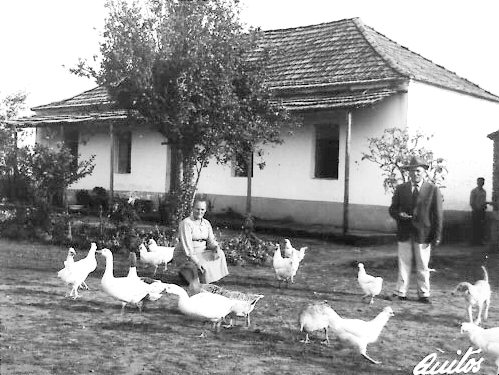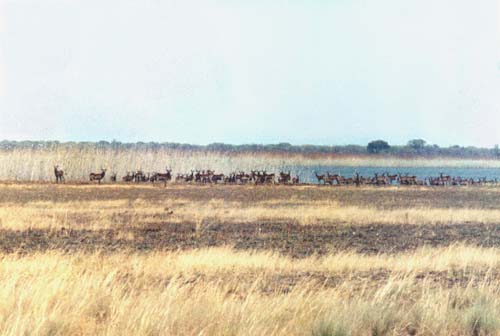

Rita was pregnant when they left Chimbondo and after a seven months trip the Costa's reached Lubango with an additional member in the family. A girl was born during the trip and Maria, the eldest of the girls, helped with the birth.
The Costa's stayed in Lubango until Christmas of that year and returned with a brand new boer wagon bought to expand their business in Chimbondo. Several relatives, attracted by the description of Chimbondo and the central plateau, packed their possessions and joined the Costa's on the trip back to Chimbondo.
The return trip was much easier. They had done it twice and of course with a large group of people, enough help was always available.
After returning from Lubango and with more children attending school, Antonio and Rita decided to build a house in Bela Vista and make Chimbondo just the working base during the seeding and harvesting times.
Bela Vista benefiting from the railway was growing and a few trading stores started appearing in the area. The stores traded mainly the cereals from the area, bee wax and honey and provided hardware and other goods required by the farmers.
António continued to plant in Chimbondo where several arimbos -planting lots- where harvested. Two types of arimbos were maintained: regadio and sequeiro. The regadio type was situated in the low lands using the river to water the crops. This type of arimbos were used to plant during the dry season. The sequeiro was the largest of the two areas and was situated in the high lands, to avoid floods and taking advantage of the nine months annual rains.
The compulsory vegetable garden was normally situated near a creek in an area free from floods. In there they normally planted cabbages, tomatoes, lettuces, fruit trees, potatoes, beans and others
The natives introduced the earlier farmers to the batata doce (sweet potatoes), mandioca (tapioca, brought by the Portuguese in the XV century from Brazil), quiabos (okra), beringelas (egg plant), matiras (native pumpkins), dendem (palm tree fruit), bananas, sape-sape, fruta pinha (caster apple), etc.
In the farm António bread native cattle for milk and beef and with the population in the area growing there was already a market for these products. With the time, several other domestic animals were bread in the farm to improve their diet.
António and Rita loved geese and therefore a large floc of these noisy and aggressive birds were kept. Chickens, pigeons, ducks and goats were part of the animal population around the Costa's homestead.

Antonio and Rita in their house in Bela Vista

Songues- Red Lechwe (kobus leche leche) in the South East of Angola